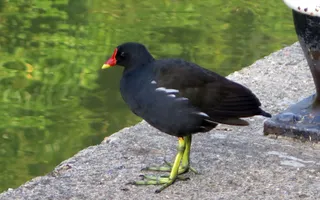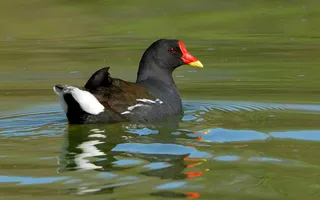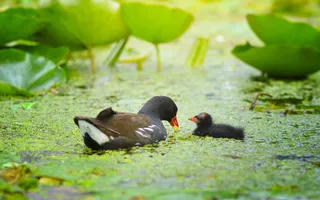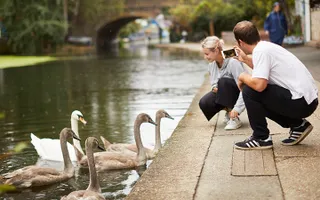Coots and moorhens are from the Rallidae family, which also includes rails and crakes. Both found in similar wetland environments with dark plumage, coots and moorhens are often confused.
The difference between coots and moorhens
The coot has black plumage with a distinctive white frontal shield and beak, whereas moorhens have dark brown-black plumage with a smaller red frontal shield and beak. The moorhen's red beak is tipped with yellow.
The easiest way to remember this difference is that the 'R' in moorhen stands for 'red' beak. There is no 'R' in coot.
How to identify a coot
Coots are bigger than moorhens with black-charcoal plumage. They have silver-grey legs with large lobed toes. Males and females are alike.













